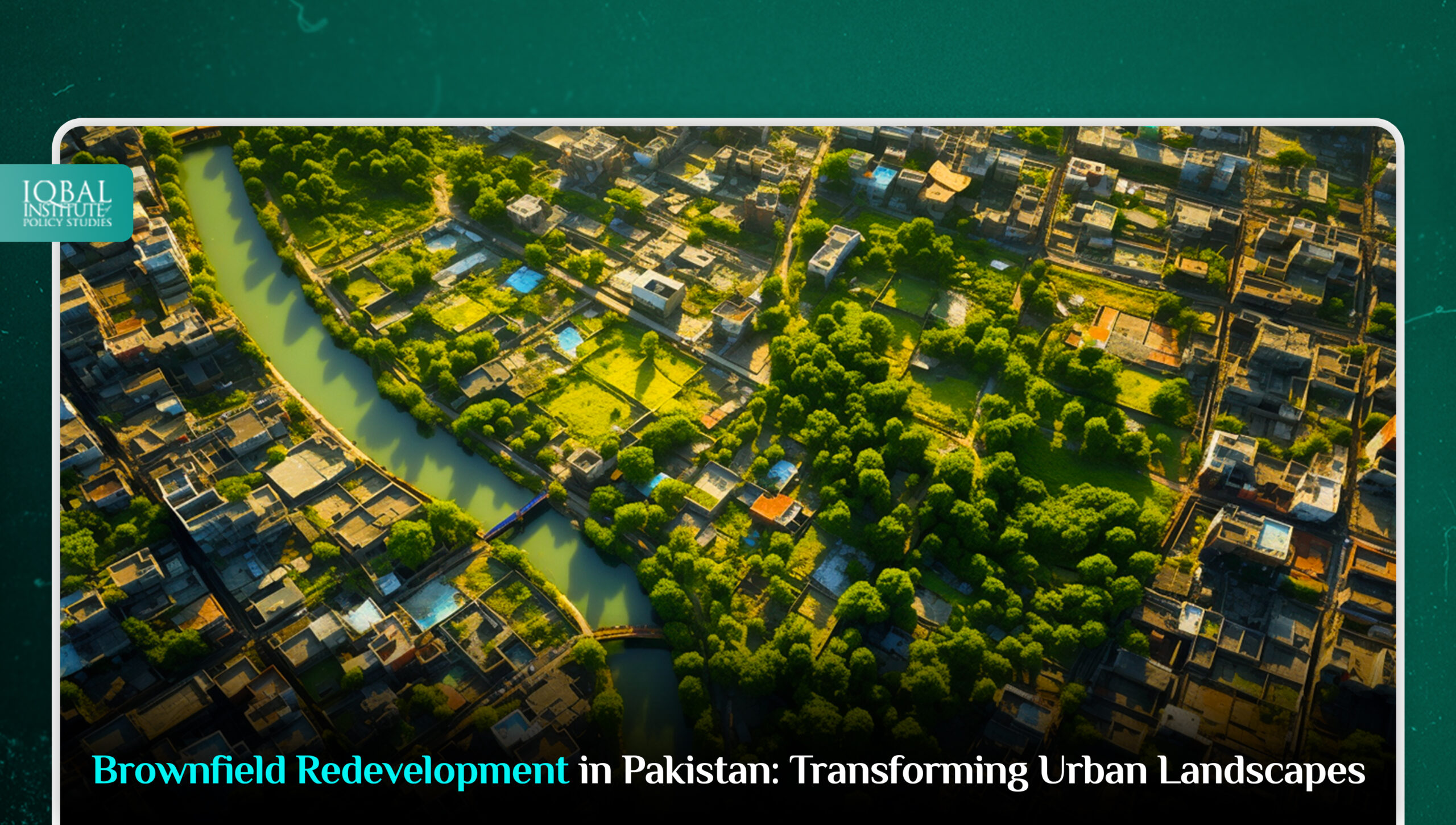Urbanization in Pakistan has led to the proliferation of abandoned or underutilized industrial sites, commonly known as brownfields. These brownfields, often contaminated and unsightly, present significant challenges to the sustainable development of cities. However, recognizing their potential, the concept of brownfield redevelopment has gained momentum in recent years. This blog delves into the significance of brownfield redevelopment in Pakistan and how it impacts urban landscapes.
Understanding Brownfield: The Foundation of Redevelopment in Pakistan
Brownfield sites, an essential concept in the realm of urban planning and development, play a pivotal role in the process of transforming urban landscapes in Pakistan. Brownfields refer to abandoned, idle, or underutilized properties, often found within urban areas, that were once used for industrial, commercial, or residential purposes. Unlike greenfields, which represent untouched and undeveloped land, brownfields carry historical significance and potential value despite their neglected state.
The significance of brownfield redevelopment lies in its capacity to repurpose these idle spaces, breathing new life into areas burdened by the remnants of industrialization. However, before embarking on a redevelopment journey, it is essential to identify the key characteristics that define a brownfield site. Common traits include the presence of environmental contamination resulting from past industrial activities, potential legal challenges regarding land ownership and usage rights, and a range of financial hurdles accompanying the extensive remediation and rehabilitation processes.
For Pakistan, a country grappling with rapid urbanization, brownfield redevelopment presents a unique opportunity to tackle the challenges of abandoned industrial spaces. As cities continue to expand, brownfields often find themselves located in the heart of urban centers, offering prime locations for revitalization. The country can promote sustainable land use and preserve its natural resources for future generations by repurposing these areas rather than encroaching upon undeveloped green spaces.
Additionally, brownfield redevelopment in Pakistan has the potential to spur economic growth and job creation. As abandoned sites become thriving commercial, residential, or educational spaces, they attract businesses, researchers, and entrepreneurs. This influx of activity enhances the overall urban experience and stimulates local economies, offering a chance for communities to prosper.
Nevertheless, the brownfield redevelopment process in Pakistan has its challenges. Addressing environmental contamination is critical to any redevelopment project, necessitating thorough environmental assessments and remediation plans. Legal complexities surrounding land ownership and the involvement of multiple stakeholders often demand meticulous coordination and collaboration between government bodies, private investors, and local communities. Moreover, securing adequate funding for these ventures is a constant concern, as remediation efforts and infrastructure upgrades can be costly.
Challenges of Brownfield Redevelopment in Pakistan
Environmental Contamination
One of the primary challenges of redeveloping brownfields is environmental contamination. These sites often bear the legacy of past industrial activities, leaving behind pollutants and hazardous substances. Cleaning up the contamination requires extensive remediation efforts, increasing the overall cost of redevelopment projects.
Land Ownership and Legal Issues
Many brownfield sites in Pakistan face complex land ownership and legal issues. In some cases, multiple parties may hold a claim to the property, leading to disputes that hinder redevelopment progress. Clearing these legal hurdles requires a coordinated effort from all stakeholders involved.
Financial Constraints
Financing brownfield redevelopment projects can be demanding, particularly in developing countries like Pakistan. The costs associated with environmental remediation, infrastructure upgrades, and construction may deter potential investors or developers.
Impacts of Brownfield Redevelopment on Urban Landscapes
Revitalizing Urban Centers
By redeveloping brownfields, urban centers transform, converting derelict spaces into vibrant, functional areas. This injects new life into the city’s heart, attracting residents, businesses, and visitors, ultimately enhancing the overall urban experience.
Encouraging Sustainable Land Use
Brownfield redevelopment supports the principles of sustainable land use. It maximizes the utilization of existing infrastructure and reduces urban sprawl, preserving surrounding green spaces and agricultural land.
Improved Infrastructure
As brownfield sites are redeveloped, they often require updated infrastructure, such as roads, utilities, and public services. This process benefits the specific site and contributes to the overall improvement of the urban infrastructure.
Economic Growth and Job Creation
Successful brownfield redevelopment projects can stimulate the region’s economic growth and job creation. Developing commercial and residential spaces attracts businesses, creating employment opportunities for local communities.
Environmental Restoration
The most significant impact of brownfield redevelopment is the environmental restoration it brings. Cleaning up contaminated sites and implementing sustainable practices result in cleaner air, water, and soil, improving public health and overall well-being.
Case Study: Lahore Knowledge Park
An example of brownfield redevelopment in Pakistan is the Lahore Knowledge Park (LKP). The LKP project, initiated by the Government of Punjab, aimed to transform an abandoned industrial site into a world-class knowledge hub. The 852-acre brownfield site, once occupied by the Pakistan Railways Locomotive Factory, underwent extensive remediation to address environmental contamination.
Through public-private partnerships, the LKP now houses educational institutions, research centers, technology companies, and other knowledge-based organizations. The project not only promotes research and innovation but also generates employment opportunities and contributes to the region’s economic growth.
Conclusion
Brownfield redevelopment in Pakistan holds tremendous potential for reshaping urban landscapes. By repurposing abandoned and contaminated sites, cities can breathe new life into their cores while fostering sustainable growth. Despite the challenges associated with environmental contamination, legal complexities, and financing, the long-term benefits of brownfield redevelopment in terms of economic growth, environmental restoration, and improved infrastructure make it a crucial aspect of urban planning and development in Pakistan.



Leave a Reply